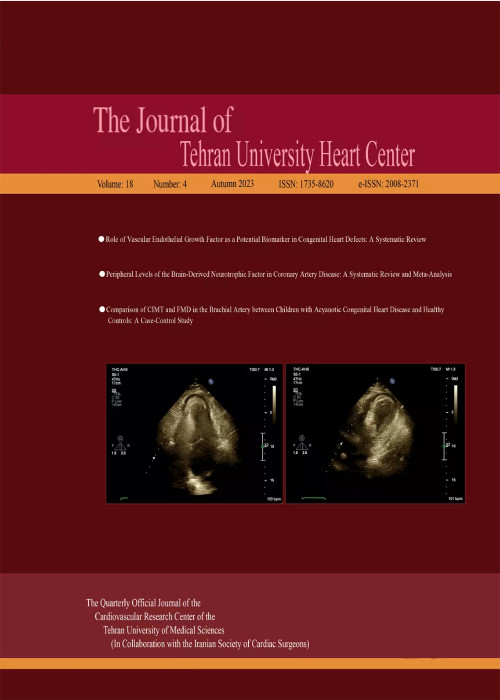Clinical, Laboratory, and Procedural Predictors of No-Reflow in Patients Undergoing Primary Percutaneous Coronary Intervention
No-reflow is a major challenging issue in the management of patients with ST-segment elevation myocardial infarction (STEMI) undergoing primary percutaneous coronary intervention (PPCI). This study aimed to investigate the clinical, laboratory, and procedural predictors of no-reflow.
This study was conducted on 378 patients with STEMI admitted to Dr. Heshmat Educational and Remedial Center (a referral heart hospital in Rasht, Iran) between 2015 and 2017. The study population was divided based on the thrombolysis in myocardial infarction (TIMI) flow grade and the myocardial blush grade into no-reflow and reflow groups. The clinical, laboratory, and procedural characteristics at admission were compared between the 2 groups using the multivariate logistic regression analysis.
The mean age of the participants was 58.57±11.49 years, and men comprised 74.1% of the study population. The no-reflow phenomenon was found in 77 patients. The no-reflow group was significantly older and more likely to be female; additionally, it had higher frequencies of hypertension, diabetes mellitus, hyperlipidemia, and a history of cardiovascular diseases. The multivariate logistic regression analysis showed that age >60 years (OR=1.05, 95% CI:1.00–1.09), hypertension (OR=2.91, 95% CI:1.35–6.27), diabetes (OR=4.18, 95% CI:1.89–9.22), a low systolic blood pressure (OR=3.53, 95% CI:1.02–12.2), a history of cardiovascular diseases (OR=4.29, 95% CI:1.88–9.77), chronic heart failure (OR=4.96, 95% CI:1.23–20), a low initial TIMI flow grade (OR=7.58, 95% CI:1.46–39.2 ), anemia (OR=3.42, 95% CI:1.33–8.77), and stenting vs. balloon angioplasty (OR=0.42, 95% CI:0.19–0.91) were the significant independent predictors of no-reflow.
This study revealed some clinical, laboratory, and procedural predictors of no-reflow for the prediction of high-risk patients and their appropriate management to reduce the risk of no-reflow.
- حق عضویت دریافتی صرف حمایت از نشریات عضو و نگهداری، تکمیل و توسعه مگیران میشود.
- پرداخت حق اشتراک و دانلود مقالات اجازه بازنشر آن در سایر رسانههای چاپی و دیجیتال را به کاربر نمیدهد.


